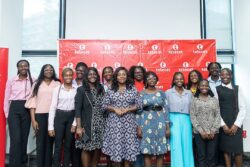Compensation has long been a cornerstone of human resource management, but its meaning and implications have evolved significantly in contemporary workplaces.
No longer confined to just salaries and bonuses, compensation now encompasses a broader spectrum of financial and non-financial rewards designed to attract, retain, and motivate employees.
In today’s complex labor market, where talent is highly mobile and employee expectations are shifting, organizations must rethink their compensation strategies to remain competitive.
Traditionally, compensation was narrowly defined as the monetary payment employees received in exchange for their work, i.e base pay, overtime, and performance-based incentives.
However, contemporary HR practices recognize compensation as a holistic system that includes both direct and indirect rewards.
Direct compensation includes wages, salaries, commissions, and bonuses, while indirect compensation, often referred to as benefits, encompasses health insurance, retirement plans, stock options, paid leave, and wellness programs.
The modern workforce, particularly millennials and Gen Z, value more than just a paycheck.
According to a survey by Glassdoor (2019), nearly 60% of employees consider benefits and perks major factors in deciding whether to accept a job offer.
This shift has forced employers to expand their compensation packages to include flexible work arrangements, professional development opportunities, and even mental health support.
In a competitive job market, compensation plays a pivotal role in attracting top talent. Companies that offer above-market pay and comprehensive benefits are more likely to draw high-caliber candidates. However, retention is equally critical.
Research by the Society for Human Resource Management (SHRM, 2021) indicates that employees who feel fairly compensated are more engaged and less likely to seek opportunities elsewhere.
Yet, fairness in compensation is not just about paying well, it’s about pay equity. Organizations today face increasing pressure to ensure transparency and eliminate wage gaps based on gender, race, or other discriminatory factors.
The rise of pay equity laws in various jurisdictions, such as the Equal Pay Act in the U.S. and the UK’s Gender Pay Gap Reporting, underscores the growing emphasis on fair compensation practices.
This article will explore compensation in the modern HR or Contemporary HR practice environment.
The Total Compensation Mix: Redefining Modern HR Strategies
As earlier eluded to in this article, the concept of compensation has undergone a significant transformation in contemporary human resources, moving beyond mere salary figures to a more comprehensive approach known as the Total Compensation Mix.
This model represents a holistic view of employee rewards, integrating both monetary and non-monetary elements to create a more engaging and sustainable employment proposition.
As organizations compete for top talent in an increasingly dynamic labor market, the Total Compensation Mix has emerged as a defining feature
of modern HR practices, signaling a new phase in how companies attract, retain, and motivate their workforce.
The Total Compensation Mix is an all-encompassing framework that includes every form of value an employee receives in exchange for their work.
Unlike traditional compensation models that primarily focus on base pay and bonuses, this approach recognizes that employees derive satisfaction and motivation from a variety of sources.
The mix typically consists of four key components: direct financial compensation, indirect financial compensation (benefits), non-financial rewards, and intrinsic rewards.
Direct financial compensation includes wages, salaries, commissions, and performance-based incentives. These are the most visible and measurable aspects of compensation, forming the foundation of an employee’s earnings.
However, in today’s job market, base pay alone is rarely enough to secure long-term loyalty. So indirect compensation is introduced to deepen the compensation offer.
Indirect financial compensation refers to benefits such as health insurance, retirement plans, stock options, paid time off, and other perks like wellness programs or childcare assistance.
These benefits enhance financial security and work-life balance, making them a critical factor in employee satisfaction.
According to a 2023 report by the Bureau of Labor Statistics, benefits account for nearly 30% of total compensation costs for employers in the U.S., underscoring their importance in the overall rewards structure.
Non-financial rewards encompass elements that improve the employee experience without direct monetary value. These include flexible work arrangements, remote work options, career development opportunities, recognition programs, and a positive workplace culture.
Studies by Gallup (2022) indicate that employees who feel valued through non-monetary recognition are four times more likely to be engaged at work compared to those who do not. Intrinsic rewards relate to the psychological and emotional satisfaction employees derive from their roles.
This includes job autonomy, meaningful work, professional growth, and a sense of belonging within the organization. While harder to quantify, these factors play a crucial role in long-term employee retention and motivation.
The shift toward a Total Compensation Mix reflects broader changes in workforce expectations and economic conditions.
Several key trends suggest that this model is not just a passing trend but rather the new standard in contemporary HR. Today’s workforce is more diverse than ever, with varying priorities across different demographics.
Millennials and Gen Z employees, for instance, often prioritize work-life balance, career development, and mental health support over high salaries alone. A 2023 survey by Deloitte found that nearly 60% of younger workers would choose a job with better well-being benefits over one with a higher paycheck.
This shift has led companies to adopt flexible compensation models, allowing employees to tailor their benefits packages to their individual needs.
Some organizations now offer lifestyle spending accounts, where employees can allocate funds toward fitness, education, or even travel, further personalizing their rewards.
Legislative changes and social movements have pushed pay transparency into the spotlight. Laws now require salary ranges in job postings, while companies like Buffer and Whole Foods have adopted open salary policies.
The Total Compensation Mix aligns with this trend by emphasizing fairness and holistic value rather than just base pay.
Employees increasingly evaluate job offers based on the entire package, health benefits, retirement contributions, and growth opportunities, rather than salary alone. The post-pandemic era has normalized remote and hybrid work, forcing companies to rethink compensation strategies.
Organizations must now consider geographical pay differentials, home office stipends, and digital wellness tools as part of their Total Compensation Mix.
Some firms have implemented location-agnostic pay, while others adjust salaries based on cost of living. This evolution highlights how compensation is no longer a one-size-fits-all equation but a dynamic, adaptable system.
Advanced HR analytics and AI-driven tools are enabling companies to optimize their Total Compensation Mix with precision.
Platforms like PayScale and ADP use real-time market data to recommend competitive salary ranges and benefits packages. Predictive analytics also help HR teams identify turnover risks by assessing employee satisfaction with their compensation structure.
The Future of Compensation: Beyond Traditional Pay
The Total Compensation Mix is more than just an HR buzzword, it represents a fundamental shift in how businesses approach employee rewards.
As the workforce continues to evolve, companies that embrace this holistic model will be better positioned to attract top talent, reduce turnover, and foster a motivated workforce.
In the coming years, we can expect further innovations in compensation, such as expanded mental health benefits, a possible four-day workweeks, and even cryptocurrency-based pay options.
What remains clear is that the future of compensation lies in flexibility, transparency, and a deep understanding of employee needs, principles at the very core of the Total Compensation Mix.
Performance-based pay remains a key component of modern compensation strategies. Variable pay structures, such as bonuses, profit-sharing, and stock options, align employee efforts with organizational goals.
However, contemporary HR recognizes that not all roles are suited to the same incentive models. Sales teams may thrive on commission-based pay, while creative professionals might prefer project-based rewards or recognition programs.
A study by WorldatWork (2020) found that companies using differentiated compensation strategies, tailoring rewards to different employee segments, see higher levels of job satisfaction and productivity. This approach acknowledges that a one-size-fits-all model is ineffective in today’s complex workforce.
While financial rewards remain essential, non-financial compensation is gaining prominence. Employees increasingly value work-life balance, career growth opportunities, and a positive workplace culture.
Flexible work arrangements, remote work options, and unlimited paid time off (PTO) policies are becoming standard in many industries.
Additionally, professional development is now a critical part of compensation. LinkedIn’s Workplace Learning Report (2022) revealed that 94% of employees would stay longer at a company that invests in their career development.
Tuition reimbursement, mentorship programs, and leadership training are no longer perks but expectations.
The rise of the gig economy and remote work has further complicated compensation strategies. Freelancers, contract workers, and remote employees often have different compensation expectations than full-time, in-office staff.
Companies must adapt by offering project-based pay, freelance bonuses, or location-adjusted salaries to remain competitive.
Moreover, remote work has introduced debates around pay equity based on geography. Some firms adopt location-agnostic pay policies, while others adjust salaries based on the cost of living in an employee’s location. This raises ethical and practical questions about fairness and competitiveness in a global talent pool.
As HR technology advances, compensation will become more data-driven and personalized. Artificial intelligence (AI) and machine learning enable companies to analyze market trends, predict turnover risks, and customize compensation packages for individual employees.
Tools like Payscale and Salary.com provide real-time salary benchmarking, helping organizations stay competitive. Personalized compensation, where employees can choose from a menu of benefits, is also gaining traction.
For instance, some companies allow workers to allocate a portion of their compensation toward student loan repayments, childcare subsidies, or additional retirement contributions. This flexibility enhances employee satisfaction by catering to diverse needs.
Compensation in contemporary HR is no longer just about wages, it’s a multifaceted strategy that blends financial and non-financial rewards to meet the evolving needs of the workforce.
From pay equity and performance incentives to flexible benefits and career development, modern compensation must be dynamic, transparent, and inclusive.
As organizations navigate remote work, gig employment, and AI-driven HR tools, the ability to adapt compensation strategies will be a key differentiator in attracting and retaining top talent.










